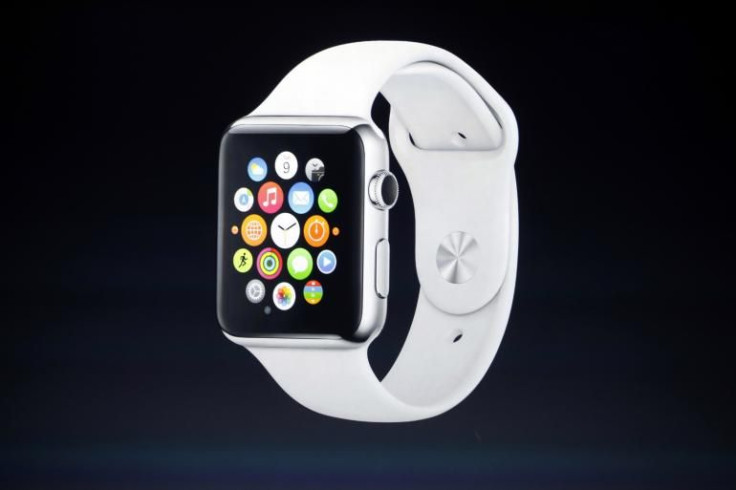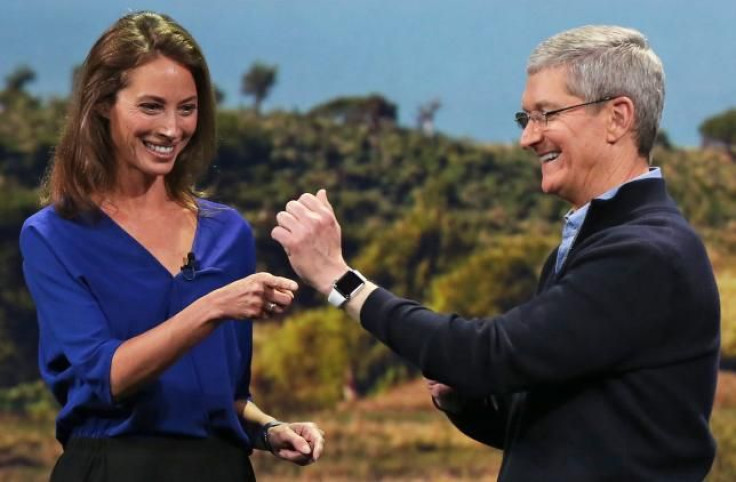Apple Watch Review Secrecy Underscores Deified Tech Giant’s Bizarre Relationship With The Media

Pre-orders for the Apple Watch begin on Friday, and very soon, at an undisclosed date, reviews of the highly anticipated wearable gadget will be blasted across the Internet, courtesy of a few lucky journalists who get early, exclusive access to the product. What is it like to be one of the chosen ones? An obvious way to answer this question would be to reach out to some prominent technology journalists -- people with a history of posting advance reviews of Apple products -- and ask. So, that’s what we did, sending requests to more than a dozen reviewers.
To say we heard crickets in return would be an understatement. Most did not respond to our requests, and those who did respond said they either had no plans to review the Apple Watch or did not yet know what their plans were.
Crickets.
Mark Gurman, senior editor for 9to5Mac.com, one of the top Apple-insider websites, said such radio silence would not come as much of a surprise to anyone familiar with Apple product reviews. “Everything is tight-lipped in that regard,” he said. “Even the time when the embargo ends is secret.”
In other words, if journalists are planning on reviewing the Apple Watch, Apple doesn’t want them talking about it or even saying when their reviews will be published. The Cupertino, California, tech giant is known for its inflexible commitment to secrecy, and as the most valuable -- and deified -- company in the world, it’s in a position to call a few shots. Although it’s generally known that Apple requires reviewers to sign non-disclosure agreements, you’d be hard-pressed to find a reviewer who would openly admit to doing so. (NDAs are typically frowned on in journalism in part because they could leave a writer or media outlet subject to litigation.)
A likely scenario is that the chosen few journalists who get early access to products capitulate to the company’s strict embargo wishes and desire for secrecy as a way of staying in the company’s good graces. It’s all part of the Apple mythology, an ecosphere fueled by an endless cycle of rumors and spin, culminating with the release of a new gadget or device whose influence seems preordained before it ever hits the streets.
“It’s the Mystery Box game,” said Neil Hughes, managing editor of Apple Insider. “They want to build hype, but they’re also trying to get control of the narrative. So the less they say, the better.”
The Usual Suspects, And Maybe More
Exactly which journalists and outlets will receive Apple Watches for advance review is also a mystery. We reached out to Apple Inc., but a spokesperson said the company -- not surprisingly -- does not share that information. However, it’s a forgone conclusion that the usual big names will be on the list. Walt Mossberg (formerly of the Wall Street Journal and currently with Re/Code), David Pogue (formerly of the New York Times and currently with Yahoo Tech) and Ed Baig of USA Today are the three biggest stars in the world of Apple product reviews. Collectively, you might call them the Mac Mafia -- they’ve gotten advanced peeks at almost every product that Apple has announced since the first-generation iPhone in 2007. The three writers are also known for their generally pro-Apple coverage.
Major technology sites like The Verge and Engadget will also almost certainly get an advanced look at the Apple Watch, but Gurman speculated that Apple may go even broader for its first wearable product. “Don’t be surprised to see some big magazines and websites that focus on fashion and fitness get early review units of the Apple Watch,” he said. “That’s sort of how [Apple is] positioning it.”

In fact, the watch has already graced the covers of a number of well-known glossies. It was worn by the supermodel Liu Wen in the November 2014 issue of Vogue China, and more recently it was seen swaddling the wrists of cover models on the U.S. magazines Fitness and Self.
At the same time, Apple seems to be snubbing some publications that focus exclusively on watches. “Apparently we didn’t make the cut,” said Joe Thompson, editor in chief of Watch Time magazine. “We have not heard from Apple about supplying a watch for review.”
Hughes added that “nobody really knows” which outlets will post advance reviews, and “you won’t really know until the embargo lifts and the reviews start hitting.”
And when will that happen? That’s a mystery, too, since reviewers are prohibited from talking about the embargoes or even acknowledging that they have the product. History can offer some help here. In the case of the iPhone 6 -- Apple’s most recent product -- reviews were published on a Tuesday evening, and the product went on sale the following Friday.
The Apple Watch was officially announced by CEO Tim Cook in early September. Details of the product were revealed early last month and on Friday, the company will start taking pre-orders and will allow customers to preview the product, by appointment, at select Apple Stores. But the watch will not officially go on sale until two weeks later. When reviews of the product will appear is anyone’s guess.

A Checkered History
Over the years, Apple has developed a reputation as a temperamental corporate entity that punishes media outlets for unflattering coverage by barring them from events or denying them access to review units. For instance, in 2012, after the New York Times ran its Pulitzer Prize-winning iEconomy series -- which looked at the sometimes punishing conditions of the overseas plants that manufacture Apple products -- Apple allegedly responded by giving an important scoop to the Times’ archrival, the Wall Street Journal. More recently, the German magazine Computer Bild claimed to be disinvited to future Apple events after it posted a video demonstration of the (now debunked) Bendgate controversy surrounding the iPhone 6.
Further back in history, Apple’s antagonistic relationship with the media goes deeper and even more sinister. A decade ago, the company hauled a number of tech bloggers into court after they published leaked information about Apple products. Apple tried to force the bloggers to reveal their confidential sources, arguing that the leakers had illegally disclosed trade secrets. The company subpoenaed the bloggers’ email service provider and argued that the shield-law protections afforded to traditional journalists should not apply, in part because the trade secrets were not in the public interest. The case earned Apple widespread criticism by media outlets and free-press advocates like the Reporters Committee.
With help from the Electronic Frontier Foundation (EFF), the bloggers ultimately prevailed in the California Court of Appeal, and the case has since become notable for upholding the First Amendment rights of online journalists. “One of the important upshots was the court’s conclusion that online journalists could be protected by the shield law, and that they were entitled to that protection,” said Kurt Opsahl, general counsel for EFF, who worked on the case.

A Softer Apple
Although Apple is perhaps no less secretive than it was in 2005, it has warmed up to tech bloggers over the years, and now even gives some smaller tech blogs early access to its products. “It’s definitely opened up a little,” said Gurman.
He may have more insight into the review process than anyone outside of Apple PR. Last year, he published a comprehensive investigation into Apple’s relationship with the media in a nine-part series called “Seeing Through the Illusion.” In it, he cataloged which reviewers and outlets published advanced reviews of Apple products going back to the original iPhone.
A look at his chart reveals that the exclusive pool of Apple reviewers has grown larger and more inclusive since the days when the Times and the Journal were pretty much the only outlets given consistent access. Gurman credited the shift in part to Tim Cook, who took over after Steve Jobs passed away in 2011, and has relaxed some of the opaque strategies of his predecessor.
At Apple Insider, Neil Hughes made a similar observation. He has been covering Apple for the site since 2009, and he’d never even spoken to Apple’s PR team. These days when he calls, he said he at least gets a “no comment.” It’s nicer than crickets, even if it doesn’t really change the dynamic. “There’s still that kind of an antagonistic relationship there,” he said. “My job is to try to expose all of their upcoming products to make sure there are no secrets. Their job is to keep everything a secret.”
Christopher Zara is a senior writer who covers media and culture. News tips? Email me here. Follow me on Twitter @christopherzara.
© Copyright IBTimes 2024. All rights reserved.












